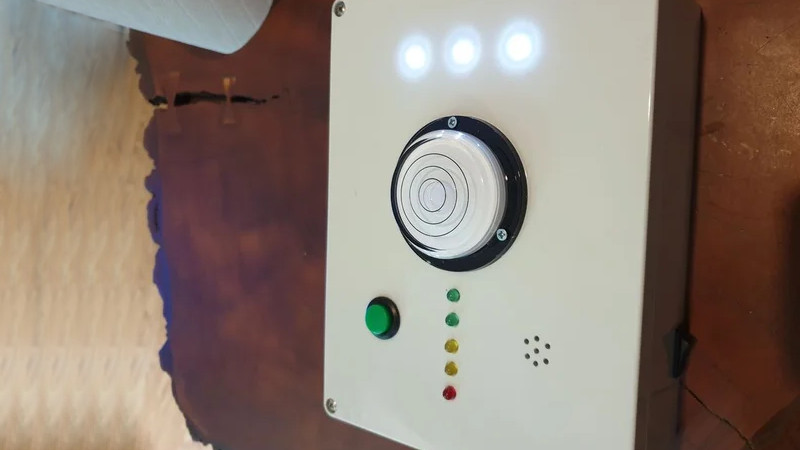In the distant past, engineers used exotic devices to measure orientation, such as large mechanical gyros and mercury tilt switches. These are all still useful methods, but for many applications MEMS motions devices have become the gold standard. When [g199] set out to build their Balance Box game, it was no exception.
The game consists of a plastic box, upon which a spirit level is fitted, along with a series of LEDs. The aim of the game is to keep the box level while carrying it to a set goal. Inside, an Arduino Uno monitors the output of a MPU 6050, a combined accelerometer and gyroscope chip. If the Arduino detects the box is tilting, it warns the user with the LEDs. Tilt it too far, and a life is lost. When all three lives are gone, the game is over.
It’s a cheap and simple build that would have been inordinately more expensive only 10 to 20 years ago. It goes to show the applications enabled by ubiquitous cheap electronics like MEMS sensors. The technology has other fun applications, too – for example the Stecchino game, or this giant balance board joystick. We’re certainly lucky to have such powerful technology at our fingertips!















“inordinately more expensive only 10 to 20 years ago”
funny… 10 or 20 years ago they had mercury and metal balls, these are affected to gravity and therefore can detect passing a certain “tilt” level just as easy if not easier. But perhaps that’s to “digital”, so how about a simple setup using a spirit level, where the fluid is monitored with a lightbulb and an LDR (how simple or cheap do you want it). The bubble passes through the lightbeam and therefore the output of the LDR is analog to the movement of the bubble. 1 level for X and one level for the Y direction.
But I do agree, that modern components certainly allow us to make “simple things” much more complicated in a much easier way then before. Sometimes we forget the obvious or the way things were done in the past. It also allows us to do a full electronic sollution, therefore we “tinkerers” do not need to hold a screwdriver any more to make our own sensors, just buy a blob, slam it onto a PCB and violah… project finished.
But, fun project and fun to play with.
You could even make an “analog mercury switch”: Make on contact a resistive rod. The more it is submerged in the mercury the shorter the resistive path gets.
Or use a spirit level with an electrolyte fill (and AC current) and a suitable set of contact electrodes to sense tilt.
I’m sure, there must already be an app for that for my phone.